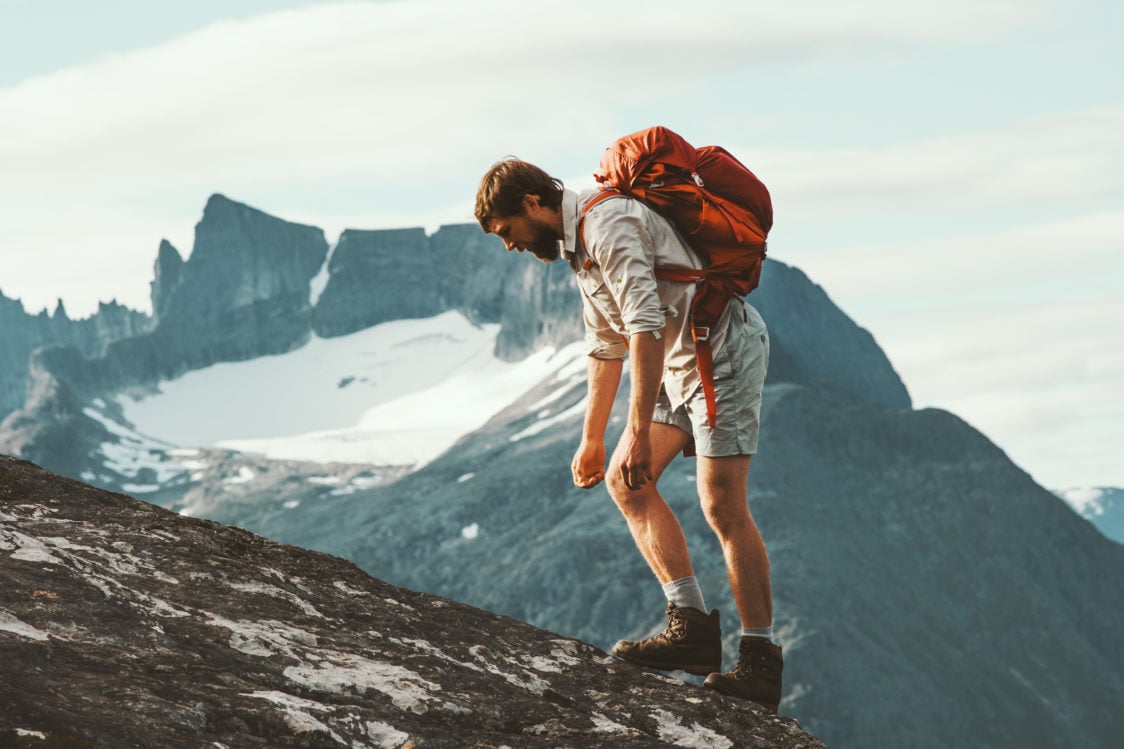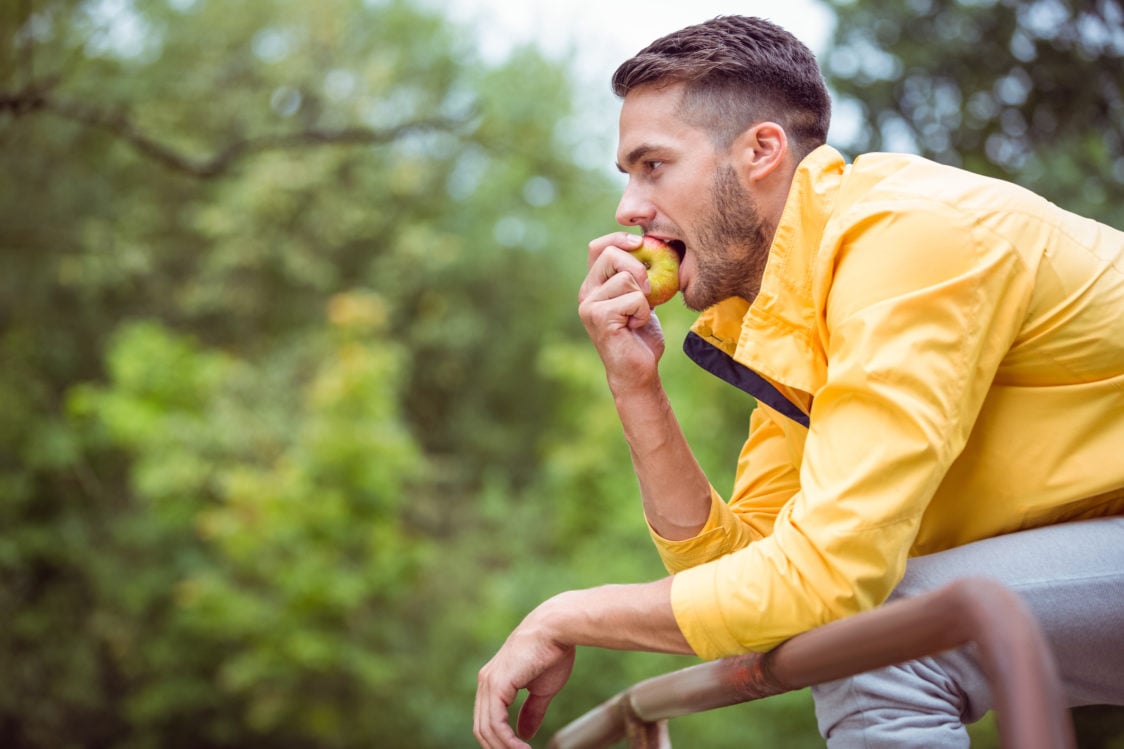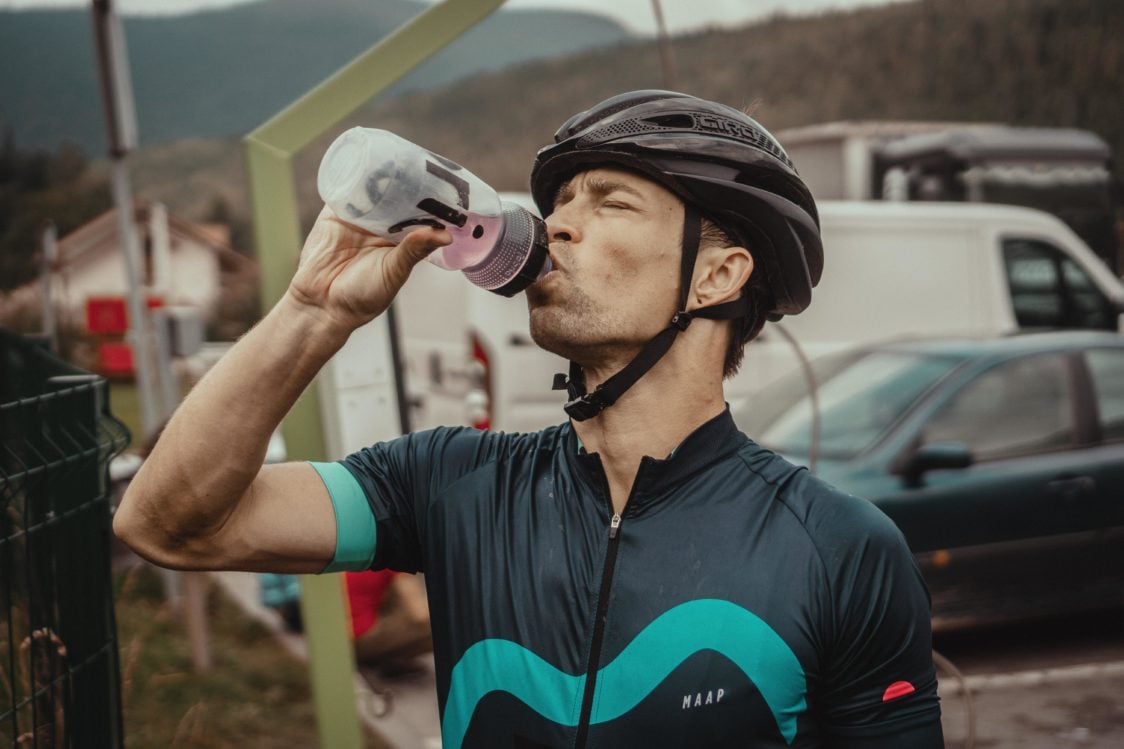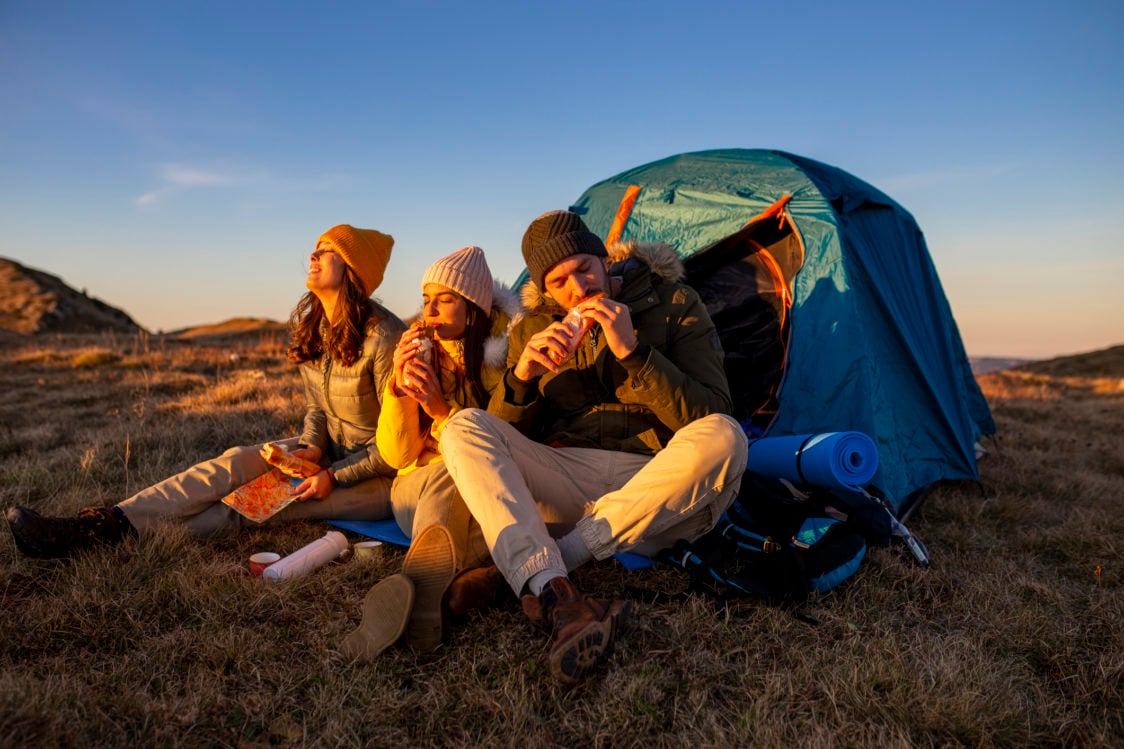Table of Contents
When we’re at home and get hungry, we can simply reach into the fridge for whatever we want. It’s not that simple, however, if you go on a day-long hike or cycle into the great outdoors. It can often take several hours before you meet the closest refreshment place. Likewise, it is therefore a good idea to bet on such a situation and not underestimate the preparation of food and drink. In today’s article, we will advise what to take with you for a day trip so that you have adequate energy and enjoy it to the maximum.
Why it’s important to replenish your energy levels?
Remember how children’s cars function when they run on batteries. When you put new batteries in, they work at full capacity. Over time, however, the energy runs out, and the toy slows down, sometimes it stops working. Once it’s completely flat, it stands still, does nothing, and is no fun. Well, it’s the same with humans.
In case you’re going on an hour-long bike ride or going jogging for a few kilometres, there’s no point in carrying sandwiches to replenish your energy. However, it is different for longer outings. If you have a full day of sporting activity planned, and you don’t prepare enough quality energy from food and drink, you’ll enjoy cycling or walking for the first few hours only. Because you’re still full from your previous meal, you can still fully function. The problem, however, will arise when the energy from breakfast and from the fast muscle supplies runs out, and the body starts asking for more food, which you don’t have with you. In addition to a dip in energy, you may start to feel quite an unpleasant hunger and irritability.
Instead of enjoying beautiful panoramas, you look at the ground and wish you were at your destination. If you’re hiking, you’re dragging your feet miserably behind you. And in the case of cycling, you may even have got off your bike and are pushing in resignation. And when someone dares to smile at you, or even speak, you give them a hateful look. You know this only too well? I’m afraid so do I. And it’s not surprising. During all-day activities, our body has a huge energy output that needs to be replenished. Otherwise, a beautiful trip can quickly turn into misery.

You might be interested in these products:
How much energy can you burn on a full day trip?
Wondering how many calories you can burn during a few hours of sporting activity? Let’s take a look at a model couple, for example. Let’s call them Dan and Jane. Dan is an average man and weighs 80 kg. Jane is an average woman and weighs 65kg. They spend time actively and so take various longer trips by bike or on foot. If you subtract the time for breaks, they will spend approximately six hours of active time per day. Let’s see how much energy they burn during this time. [1]
| Activity | 65kg female burns in six hours | 80kg man burns in six hours |
|---|---|---|
| Riding a bike at 17 km/h | 2652 kcal | 3264 kcal |
| Riding a bike at 21 km/h | 3120 kcal | 3840 kcal |
| Riding in the mountains at a competitive pace | 6240 kcal | 7680 kcal |
| Walking at 5.5 km/h on a hard surface | 1680 kcal | 2064 kcal |
| Walking at 4.5 – 5.5 km/h uphill with a slope of 1 – 5% | 2070 kcal | 2544 kcal |
| Walking at 4.5 – 5.5 km/h uphill with a slope of 6 – 15% | 3120 kcal | 3840 kcal |
| Hiking | 2340 kcal | 2880 kcal |
| High-altitude hiking with a backpack | 3120 kcal | 3840 kcal |
As you can see in the table, the output is varied and with many activities, it can be really high. Just to give you an idea, there are approximately 7700 kcal hiding in a kilogram of fat. With a day trip, you can often burn the energy hidden in half a kilogram of fat. This needs to be at least partially supplemented. Let’s see what it might look like in both the right and the wrong way.
What does bad preparation for a trip look like?
Our model pair Dan and Jane went on a day’s hike. They plan to climb two mountain peaks and then head back to the campsite. They don’t want to carry too heavy backpacks, so they pack 2 litres of water, 2 apples and one 40g energy bar each. Furthermore, they expect to eat somewhere along the way. They left at 9am after breakfast, and two hours later they’re hungry. They each have an apple and save the energy bar for an afternoon snack. But there is a big problem – they have run out of fluids. It will take two more hours to reach the first peak. Thirst combined with midday sunshine can make hiking pretty unpleasant. So, they are both exasperated, tired and parched. They’re even getting a little dizzy. Along the way, hunger will add to their thirst.
The greater the relief when they reach the mountain hut. They’ll each have a beer to quench their thirst. Next is what to choose for lunch. Their hunger is really unbearable now, so the choice falls on beef goulash with six dumplings. They suspect it’s not the best idea in the heat, but their taste is stronger. Sweaty, they dig into their hot goulash, and have another beer to cool off. Well, what’s next?
They’ve both overeaten, the alcohol spills pleasantly into their bodies, their legs are somewhat heavier, and they don’t want to walk anymore either. So they decide to go back to the campsite and end the trip early. Instead of a well-earned view, they had an hour’s sleep at the cabin and regret not reaching their destination. They’ll prepare better next time.
Now let’s see how to do it right so we don’t end up like them.

What does the correct preparation for a trip look like?
Our model couple Dan and Jane are once again on a full-day hike. This time, however, they will not underestimate the correct preparation. They plan their route and mark the places where food and drink is available. They see that they will go uphill the majority of the way, and they will encounter their first mountain refreshment place after 12 km, which can take up to four hours in heavy terrain. So they take two backpacks instead, and each puts in two litres of water and one chilled caffeinated drink in case they feel tired. Beforehand, they studied the menus of individual refreshment places along the way that cook mostly sauces and fried foods that would then put unnecessary strain on digestion. Therefore, they prefer to take their own lunch in addition to snacks, which is pleasantly filling and energizing.
They leave for their trip again at 9 a.m. after breakfast. After two hours, they stop for a refreshment break, have an apple, and each has a lighter backpack by a litre of water. An hour later, the sun is very bright. So they sit in the shade and begin a twenty-minute lunch break. They have prepared a baguette and sliced vegetables. Then they continue on, and within an hour, they are at the first mountain hut. They refresh themselves with coffee, cold juice and share the light carrot cake they bought. Full of energy, they move on. Before that, however, they will remember to have water bottles between them equal to four litres between them. An hour into the journey, they begin to feel slightly hungry. So everyone has one protein cookie, Dan takes a bite of an apple too. They continue on, reaching the second peak in two hours. It’s time for another larger snack. They will enjoy a can of tuna, to which they will add bread. They replenish their water at the refreshment place and make their way back to the campsite. Furthermore, they cut their trip down by taking the cable car as planned and are back at the cabin in two hours, where dinner awaits. To celebrate that they have conquered their goal, they will each have a standard glass of wine after a hearty meal. They fall asleep with pleasant fatigue and satisfaction from their performance during the day.
Good preparation = the basis of a successful trip
From the table above, you can indicatively deduce how much energy you can burn with one trip. It doesn’t mean, however, that you have to replenish it immediately along the way, so you don’t end up like Dan and Jane with poor preparation. Nor can you count on a day trip eating only two apples. You will see that when you supply the body with high-quality energy, you will be richly rewarded. You will enjoy a pleasant trip, and you will not worry about hunger and fatigue. To help you prepare your meal, we have some practical tips that will be useful for both cyclists and hikers.

1. What to drink on a full day outing?
Sufficient hydration ranks amongst one of the basic needs without which our bodies cannot function properly. To provide it with the optimum amount of fluids, you need to drink a minimum of 30-45 ml per kg of body weight each day. In case you are physically active or are very hot, the need for fluids is even higher. Think about it, and always have plenty to drink. It doesn’t have to be only water. [2]
In fact, you also lose important electrolytes that are involved in the proper functioning of various processes in the body. Among the most important are sodium, potassium, calcium, chlorides and magnesium, each of which has an irreplaceable function in the body. Potassium, for example, is involved in hydrating the body together with sodium. Calcium affects muscle contraction. However, magnesium also plays a role in helping to prevent unpleasant muscle spasms and also contributes to reducing fatigue and exhaustion. That is why it is very popular among hikers as well as cyclists and other athletes. [3-4]
Suitable drinks
- water
- water mixed with ReHydrate drink to supplement important electrolytes (electrolyte tablets can help with this)
- ionic RTD drinks (may have a higher energy content)
- moxy drinks containing caffeine or BCAA
- MoiMüv Protein Milkshake, which satiates and replenishes necessary proteins
- water flavoured with Bolero (instant drink without sugar and with minimum calories)
- home-made iced tea – you make tea at home, flavour it as required, add ice cubes and pour into a thermos flask to keep the drink cold for longer
- sugary drinks – you don’t have to worry about having an on tap sugary soda or juice during longer trips to replenish the energy needed in the form of sugar
Conversely, try to avoid alcohol, which is more likely to dehydrate the body. Moreover, it can also be dangerous to consume before cycling. If you must drink it, take a small amount as a reward after a hike or longer cycle. You shouldn’t overdo the caffeine, either. Although this stimulant may kick in at an appropriate dose, it is more likely to be harmful in the event of an overdose. I guess nobody wants to experience heart palpitations, dizziness and other negative signs of excess caffeine intake during sporting activity. It is recommended that the daily intake of this stimulant should not exceed 400 mg. [5-7]
How to ensure adequate hydration?
- Set off with at least two litres of liquids per person.
- Find out ahead of time where you can replenish water supplies.
- If you don’t know what quality the natural springs will have, prepare tablets or bottles with you to help clean the water.
- Spread your fluid intake for the period till your next break.
What are the symptoms of dehydration?
If you do not drink enough during physical activity, you may experience familiar signs of dehydration. [8-9]
These include, for example:
- lowered performance output
- increased fatigue
- poor thermoregulation
- headache
- dizziness
- spots before your eyes
There are many more of these manifestations. If you are starting to feel any of them even slightly, take a break and try to replenish lost fluids. If you’ve underestimated your energy intake overall, have a sugary drink.

2. How to prepare lunch for a hike or cycle?
You should definitely not skip larger meals during the day, such as lunch, even during day hikes or cycling trips. How to prepare it to give you enough energy and not make you want to sleep for several hours after food?
The bottom line is not to make the dish too heavy. Therefore, it should be made up of easily absorbed carbohydrates, which serve as a primary energy source, and proteins. These will satiate you, promote regeneration and help protect muscle mass. To make lunch even more filling, you can also add sources of fat as needed. Think also that it can be very warm outside. Adjust its composition accordingly. For example, avoid mayonnaise and similar ingredients that are prone to spoilage.
Suitable lunch for hiking or cycling
Breads and pastries – spread with a cottage cheese spread, top it with a high percentage ham, cheese or vegetables. You can also add eggs or tofu. If you want to make your lunch more varied, cut extra vegetables into your box. In case you do not have the space to prepare sandwiches, you can make do with a wholemeal roll and a can of tuna or sardines, which are also a valuable source of omega-3 fatty acids.
Pasta salad – cooked pasta (you can also use legumes) and mix with any vegetables and add tofu, canned tuna or ready-cooked chicken. Instead of mayonnaise, make your own dressing from balsamic, cider vinegar or oil.
Couscous – cooked couscous mix with vegetables and a source of protein (meat, tofu, seitan, tempeh, ham), you can also add cheese. Rice, bulgur, egg barley or quinoa can also be used instead of couscous.
Protein pancakes – you can easily make them from a prepared mixture at home. You can smear them with jam or hazelnut spread. Tip from us: You can spread your pancakes right before you eat them. Just get a smaller 30g pack of nut butter, enough for just one lunch.
When preparing food, think whether it would taste good both hot or cold. Taking tomato sauce with dumplings might not be the best option. At the same time, if you want your prepared lunch to stay warm for as long as possible unscathed, store it in the freezer for an hour before heading out. Be careful not to forget your food at home, though. You don’t want to experience that feeling when, after many kilometres, you finally stop for lunch and find that you have left the box at home in the freezer. If you’re going for a multi-day hike, you can’t count on a salad or ham pastry to stay warm for a few days.
However, if you walk for ten hours a day for several days in a row, you will burn a really large number of calories that you need to replenish adequately. How? In addition to packaged biscuits, bars, jerky and canned goods, you can also try ready-to-eat meals that only need to be warmed up using hot water. In a few minutes, you can enjoy pasta bolognese, chicken curry or beef with thyme. This way, you replenish your body with quality nutrients in optimal proportion. You can also help yourself to an all-in-one blend of FueGain, which has great digestibility and conveniently replaces one complex meal.

3. How to choose a suitable restaurant?
If you don’t want to carry snacks and other boxes for a hike or cycle, you can of course also eat at a restaurant. In order to make the visit a pleasant stop for replenishment rather than a stop for the rest of the trip, we recommend the following advice.
- Find out ahead of time what restaurants or snacks you have available to you along the way.
- Find out what they offer and choose a suitable establishment accordingly.
- Choose establishments that don’t just offer heavy sauces and fried food.
- Try to always choose a quality protein source supplemented with complex carbohydrates.
- Don’t deny yourself the foods you want. If you’ve been looking forward to climbing the mountains for a week and having blueberry dumplings with cottage cheese and whipped cream on top as a reward, it would be a shame to deny yourself of them. You can enjoy them without remorse because you have a large energy output. However, think about each meal in context. If you want to have a more caloric meal, but you know you still have a long way to go, you’d better share it with a friend. The first bites taste the same as those which you do not want. If you don’t want to share your food and want a larger serving, you’d better treat yourself to it when you get back to the campsite when you’ve finished any activity.
4. How to choose snacks for hiking or cycling?
Lunch isn’t the only meal you should be dealing with. Smaller snacks are equally important to help you maintain energy throughout your activity. These lighter snacks need not be elaborately prepared. Simply throw them in your backpack, and you’re good to go. A big advantage is that they are easy to consume while walking, which means you don’t have to waste time. For cycling, however, we recommend stopping and enjoying the snack in peace due to safety reasons.
Suitable snacks
- fresh fruit – choose fruits that won’t deform (apple, pear, or berry fruit in a box)
- lyophilized fruit
- nuts
- protein bars
- protein cookies
- flapjacks
- dried meat
- chopped vegetables
- kefir drink
- ReCharge gel
- MoiMüv Protein Milkshake
- nut butter sample
And if you’re a proficient cook, you can take inspiration from our fitness recipes and prepare your own protein buns or low-carb peanut biscuits.
What should you remember?
Before you go hiking or cycling, always be aware that there is a large energy supply that needs to be replenished. You certainly won’t be satisfied with an apple and a can of beer for the day. So try to choose high-quality foods that will primarily contain a source of energy in the form of carbohydrates. However, add high-quality protein or fat for extra satiety. Don’t just rely on what’s available in restaurants along the way. Also prepare your own snacks and drinks depending on the distance you want to achieve. You will see that each trip will be much more pleasant without hunger and fatigue.
If you have a hiking or cycling enthusiast among your friends, be sure to share this article with them. They, too, will appreciate practical tips on how to eat on longer trips.
[1] Compendium of physical activities – https://sites.google.com/site/compendiumofphysicalactivities/Activity-Categories/walking
[2] Barry M. Popkin et al. – Water, Hydration and Health – https://www.ncbi.nlm.nih.gov/pmc/articles/PMC2908954/#R1
[3] Magnesium – ttps://examine.com/supplements/magnesium/
[4] Commission Regulation (EU) No 432/2012 of 16 May 2012 establishing a list of permitted health claims made on foods, other than those referring to the reduction of disease risk and to children’s development and health – http://data.europa.eu/eli/reg/2012/432/oj
[5] Kathleen E. Roberts, MD - Mechanism of Dehydration Following Alcohol Ingestion – https://jamanetwork.com/journals/jamainternalmedicine/article-abstract/568848
[6] Schneiker, K. T. a kol. – Effects of Caffeine on Prolonged Intermittent-Sprint Ability in Team-Sport Athletes – https://journals.lww.com/acsm-msse/Fulltext/2006/03000/Effects_of_Caffeine_on_Prolonged.25.aspx
[7] Caffeine – https://examine.com/supplements/caffeine/
[8] Montain SJ, Coyle EF – Influence of graded dehydration on hyperthermia and cardiovascular drift during exercise – https://www.ncbi.nlm.nih.gov/pubmed/1447078
[9] Cheuvront SN, Carter R, Sawka MN – Fluid balance and endurance exercise performance. – https://www.ncbi.nlm.nih.gov/pubmed/12834575


Add a comment